Unique culture, tourism revive Tibetan village in Sichuan
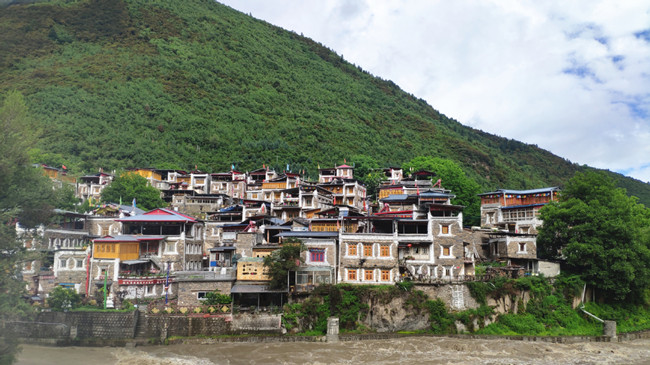
A cluster of Jiarong Tibetan folk houses built with stones sit on the foot of a green hill in Xisuo village, Zhuokeji town, Aba Tibetan and Qiang autonomous prefecture, Southwest China's Sichuan province, on June 12, 2020. [Photo by Zhang Wenfang/chinadaily.com.cn]
Residents in Xisuo village, an ancient hamlet in Southwest China's Sichuan province, have benefited from the rural tourism that has taken shape in recent years by tapping its unique Tibetan and Tusi culture.
On one side of the Suomo river running through the village sits a cluster of traditional houses built with stones against a hill, specific to Jiarong Tibetan group, one branch of the Tibetan ethnic group. On the other stands a five-story Tusi chieftain manor erected during the late Qing Dynasty (1644-1911), in Zhuokeji town, Aba Tibetan and Qiang autonomous prefecture.
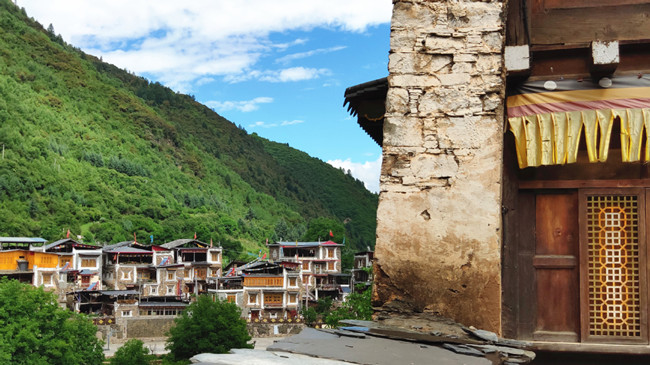
A view of folk houses from the Zhuokeji Tusi manor in Xisuo village, on June 12, 2020. [Photo by Zhang Wenfang/chinadaily.com.cn]
Tusi was tribal leader recognized as an imperial official by the governments of the Yuan (1271-1368), Ming (1368-1644), and Qing dynasties.
In the past, Xisuo villagers took orders from and worked for the ruling chieftain families. They were silversmith, blacksmith, carpenter, servant, tenant and so on.
With the area's liberation in 1951, the chieftains no longer existed and the manor fell into disuse. The villagers turned to make a living by cutting down forests and selling woods then after.
was banned in around 1998. Due to the urban expansion, most farmland was also requisitioned for construction.
At that difficult time, tourism started to show some early signs in the village.
In around 2000, some backpackers discovered the hidden village by chance and were amazed by the perfect mix of the original nature scenery and the distinctive folk houses and the manor.
The news attracted more photographers and artists to capture the beauty of the village and explore its rich culture.
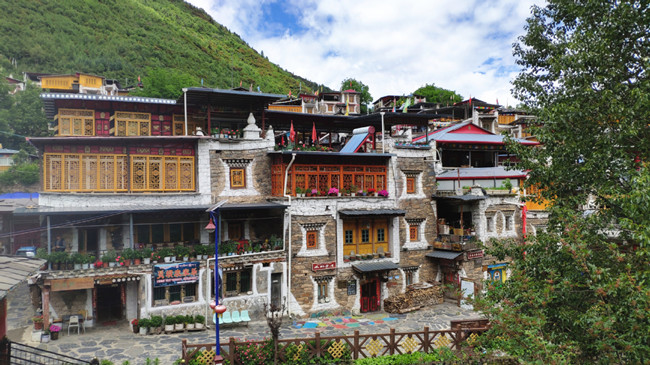
A cluster of Jiarong Tibetan folk houses built with stones sit on the foot of a green hill in Xisuo village, Zhuokeji town, Aba Tibetan and Qiang autonomous prefecture, Southwest China's Sichuan province, on June 12, 2020. [Photo by Zhang Zhengpeng/For chinadaily.com.cn]
To protect natural forest and the environment, logging was banned in around 1998. Due to the urban expansion, most farmland was also requisitioned for construction.
At that difficult time, tourism started to show some early signs in the village.
In around 2000, some backpackers discovered the hidden village by chance and were amazed by the perfect mix of the original nature scenery and the distinctive folk houses and the manor.
The news attracted more photographers and artists to capture the beauty of the village and explore its rich culture.
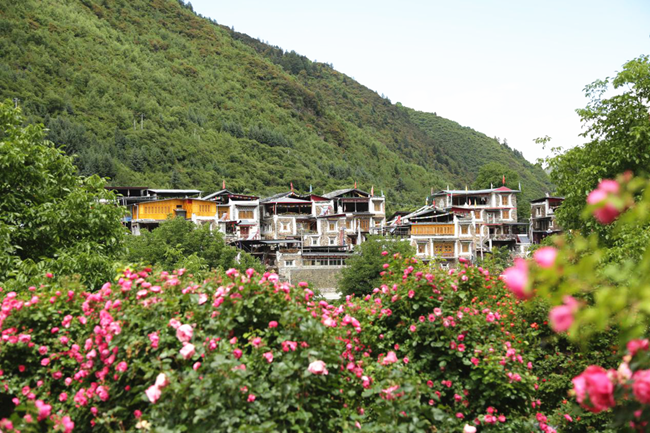
A cluster of Jiarong Tibetan folk houses built with stones sit on the foot of a green hill in Xisuo village, Zhuokeji town, Aba Tibetan and Qiang autonomous prefecture, Southwest China's Sichuan province, on June 12, 2020. [Photo by Zhang Zhengpeng/For chinadaily.com.cn]
When these earliest visitors came, they asked local residents whether they can live in their houses for a time and pay some fees.
Gradually, Xisuo village has made a name and formed a climate to receive guests from afar.
In 2008, the village came into the government's notice and obtained substantial support to further develop its rural tourism.
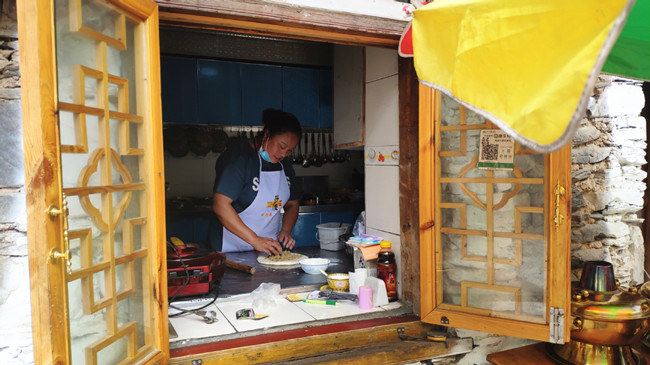
A villager prepares local food for visitors who live in her homestay in Xisuo village, on June 12, 2020. [Photo by Zhang Wenfang/chinadaily.com.cn]
With millions of investment, the village conducted proper renovations and improved the infrastructure. The original appearance and its essence were all well-preserved.
Kitchens and toilets in the stone folk houses were upgraded to adapt to the need of the tourists. Access of tap water reached every household. Livestock housings were separated from the house cluster and relocated. Roads were built to the villagers' doorsteps. Protections to the Zhuokeji Tusi manor were also strengthened.
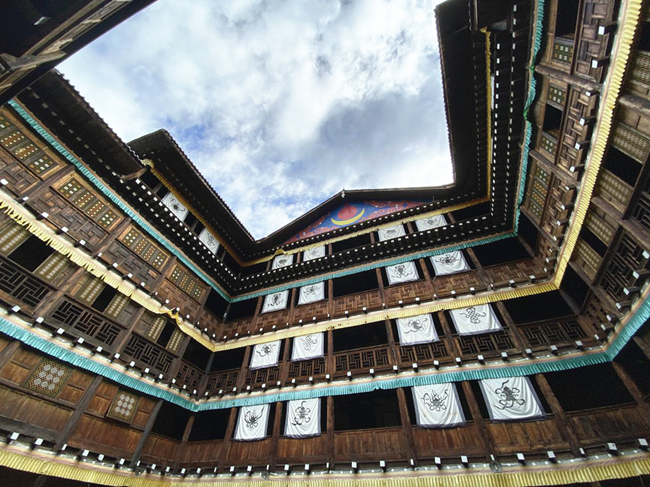
A view of the Zhuokeji Tusi manor in Xisuo village, on June 12, 2020. [Photo by Zhang Zhengpeng/For chinadaily.com.cn]
As of the end of 2019, out of 83 households inhabiting in the folk house cluster, 42 are operating homestay business with a total 266 beds.
In 2019, over 15,380 trips were made to the folk house and the manor, generating revenue of 2.8 million yuan ($400,000).
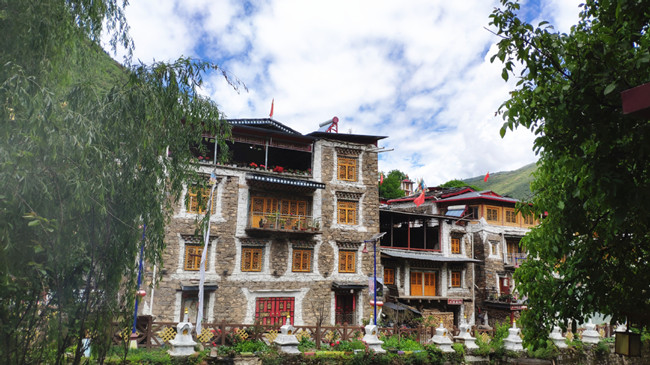
A cluster of Jiarong Tibetan folk houses built with stones sit on the foot of a green hill in Xisuo village, Zhuokeji town, Aba Tibetan and Qiang autonomous prefecture, Southwest China's Sichuan province, on June 12, 2020. [Photo by Zhang Wenfang/chinadaily.com.cn]
"Due to the COVID-19 pandemic, large tourist group is rare in the first half of this year. But I still often see many vehicles with other places' license plate stopping on the road," Tsering Mon, a homestay operator who launched the business in 2010 and has an annual income of 50,000 yuan.
"The tourists mainly come from Chengdu and Chongqing, two big cites close to the village. Others come from provinces like Guangdong, Zhejiang and Fujian. Recently, tourists from the Northeast China are also on the increase. I still have confidence in our rural tourism," he added.

A view of Xisuo village in 1961. [Photo provided to chinadaily.com.cn]
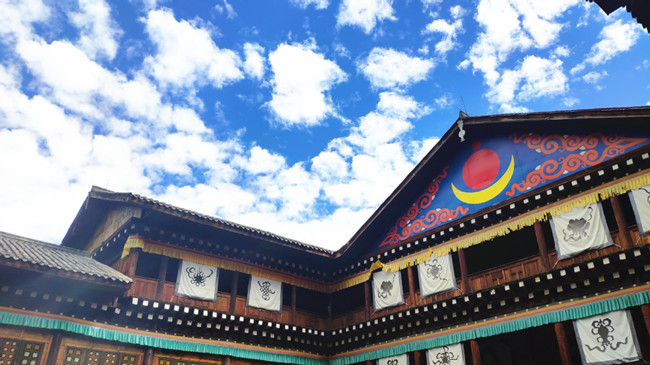
A view of the Zhuokeji Tusi manor in Xisuo village, on June 12, 2020. [Photo by Zhang Wenfang/chinadaily.com.cn]
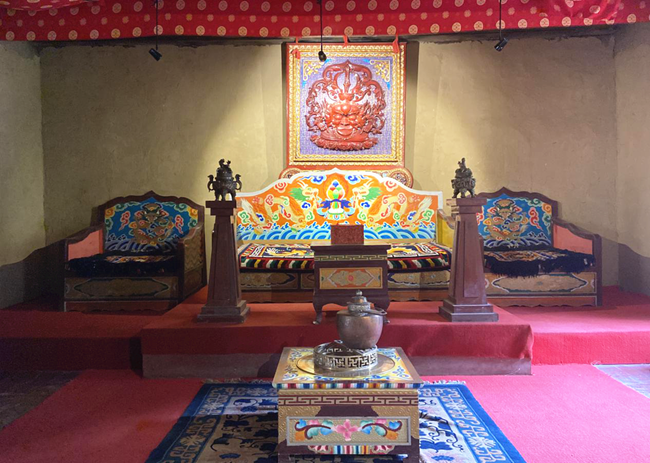
An interior view of a room of the Zhuokeji Tusi manor in Xisuo village, on June 12, 2020. [Photo by Zhang Zhengpeng/For chinadaily.com.cn]
























